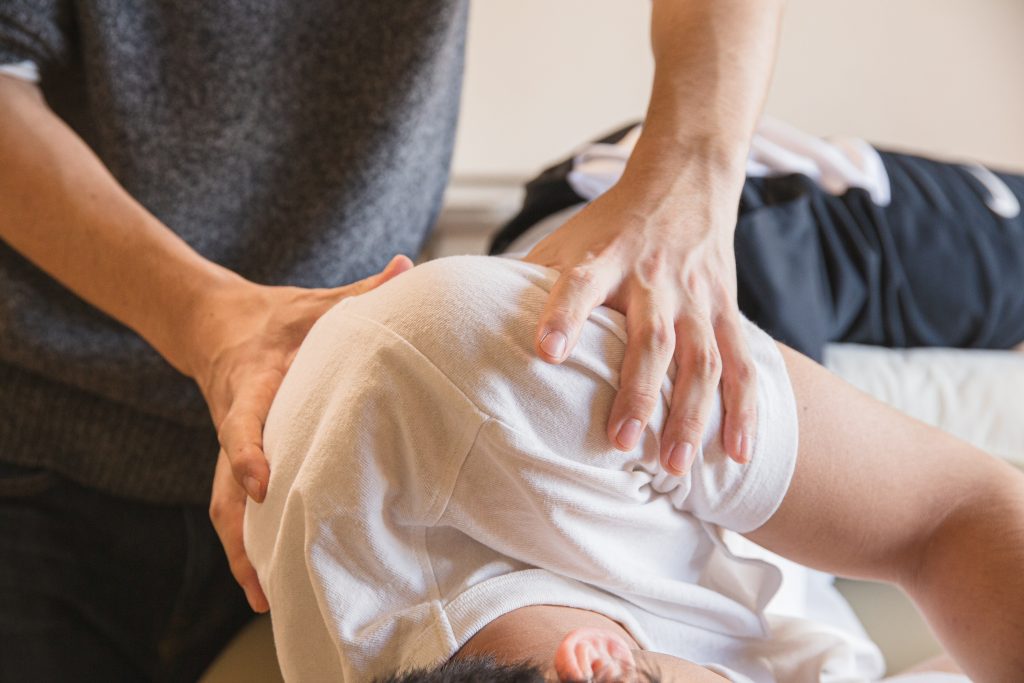What is meant by back pain?
Severe pain radiating over the area of the backbone and back, especially in the lumber, normally due to muscle strain, ligament strain, or spinal or skeleton-associated problems.
Symptoms:
The main symptom of the backache is the pain in the back of the body from the shoulder to the lower back. During mobility such as standing, walking, bending, and lifting radiating pain worsens and makes the person who suffered uncomfortable in work routines. Principal symptoms are;
- Severe stabbing pain in the back
- Muscle aches due to spasms in the back
- Sometimes the inability to straighten the body or movements

Types:
There are two main types of backaches are;
- Acute backaches: These types of pains are sudden and very severe pains. These may be cured in a short time i.e., days or weeks. These include fractures, muscle sprains, or muscle tears.
- Chronic backaches: These are the pains that last for longer periods of time and are associated with the fusion of bones, degeneration of joints, chronic sciatica, or metabolic problems associated with the inflammation and other such disturbances.
What are the most common causes of back pain?
Following are the major causes of the backaches.
- Imprudence in behavior: It means back pain associated with excessive sitting, sitting in improper postures, or working more than the body’s physiological capacity. These things directly affect the quadriceps, psoas muscle tightness, and muscular atrophy. These activities also affect gluteus muscles (buttock muscles).
- Genetic problems: Every structure of humans is under the control of the genetic program, which we receive from our parents. Some kinds of problems are inherited from the parents, such as degeneration of cartilage, bone weakness, or muscular dystrophies.
- Nutritional Causes: Most of the problems of backaches are associated with malnutrition. These include vitamin D, calcium, and some other mineral deficiencies that are directly involved in the strength of muscle and the development of bones.
- Hormonal causes: such as estrogen level in females. Low level of estrogen results in the weakness of the bones.
- Heavy lifting or any kind of hard exercise: These practices lead to ligaments and muscle strains due to the awkward movement of heavy lifting. Spinal ligaments
- Constant stress over back muscle: The constant stress over back muscles lead to muscular spasm. These result in sprains, Injuries to muscles, tendons, and ligaments.
- Slipped disc: Herniation of discs causing pressure on the spinal nerves. Sciatica is most commonly occurring due to ruptured discs.
- Other disorders: Spondylosis, a variety of arthritis (Gouty arthritis, rheumatoid arthritis & osteoarthritis), Scoliosis, Osteoporosis
- Medical conditions, strained nerves, diabetes mellites, cardiovascular disorders, kidney problems, and some other malfunctions.
Risk factors:
The main factors that increase the risk of back pain are;
- Work-related problems. Some professionals spend 10-15 hours a day sitting in chairs during office hours, such as banking, and drivers of public transport.
- Sedentary lifestyles of housewives.
- Increased age and lethargic behavior.
- Metabolic disorders such as an increase in uric acid in the body.
- Pregnancy
- Obesity
- Smoking & alcoholism
Diagnosis:
For the treatment of back pain, it must be necessary to know the actual cause of the back pain. So following tests are recommended by the physicians and physiotherapists to know the reasons behind backaches.
- Bone scan
- Computed Tomography Scan (CT scan)
- Electromyography (EMG)
- Magnetic Resonance Imaging (MRI)
- X – Rays

Preventive measure
- Regular sleep
- Proper rest
- Balance nutrition
- Regular medical check-up
- Regular exercises
- Smart postures during sitting standing and walking
- Avoid continuous 10 hours sitting in offices. Break your sitting routines by some walking and relaxing exercise.
Treatments:
- Bed rest: use a soft pillow under your back to relieve pain.
- Massage olive oil in the area of back ache. Apply oil to the affected area and tenderly massage 2 to 3 times a day. It will definitely relieve pain because olive oil has of anti-inflammatory and analgesic properties.
- Drink vita D and calcium-fortified milk
- Consume one teaspoon of turmeric powder in 250 ml milk twice a day. Turmeric is an anti-inflammatory agent.
- Add Magnesium sulfate to a bathtub and add water. Spend some time in that water because magnesium sulfate when dissolve in water split into magnesium and sulfate ions. These absorb through the skin and act as anti-inflammatory agents and relax muscles.
- If pain is very severe, use a painkiller to relieve your pain.
I assure you these practices will help you. On the other hand, If these practices do not help then consult your physiotherapists.

